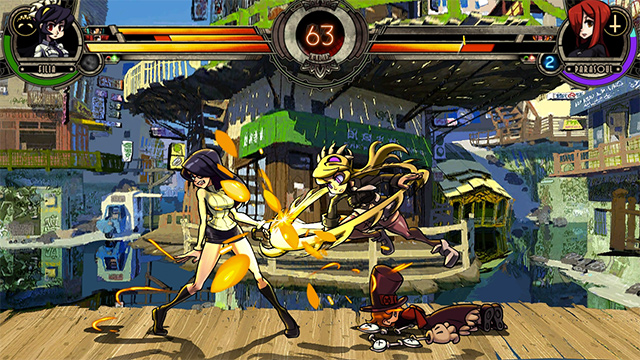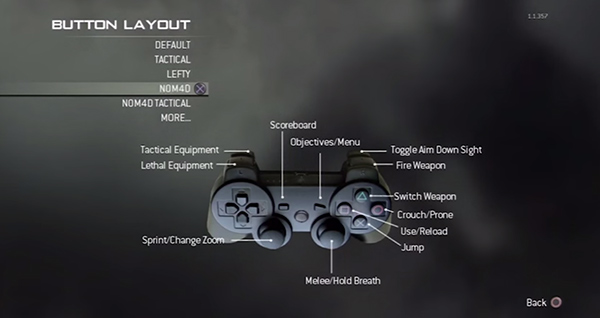· 12 min read
How to expand your audience with Game Accessibility
Nathan Lovato
Nathan is a game design expert at GameAnalytics. Currently founder and game design instructor at GDquest.
We make games for others to enjoy. We want to reach the largest amounts of players possible within our target group. There are many decisions we can take in our design process to improve the feel of our game. We can invest time on the core mechanics, the aesthetics, and the sound design. All that is of great importance.
We want our games to keep the players in a mental state of flow as much as possible. Our games should try their best to keep the player immersed in its world. In other words, our role as designers is to provide a good user experience. That is the field of UX design. It is all about making our creations usable, enjoyable and accessible.
Those 3 components of UX design are deeply linked to one another. Your game will hardly be pleasant if its UI is hard to navigate, or if its rules are unclear or ever-changing. That both relates to usability and accessibility. As you guessed, we are going to focus on accessibility here, one of the 3 pillars of user experience design. Game accessibility is an emerging field of study that focuses on making games more accessible to all gamers. Disabled ones in particular.
Game accessibility for all it’s worth
Before we dive deeper into the topic, I have to stress out the fact that an accessible game is not a casual game. Blizzard offers good examples of titles with excellent UX design and deep challenges. Diablo 3 or Starcraft 2 both answer the expectations of experienced users in terms of difficulty. Yet, they offer a gentle curve to other users. Blizzard’s games feature color blind modes that support all 3 types of color blindness. The games run smoothly on affordable computers. Those are a few aspects of Blizzard’s games that improve their usability for a wide range of users.
Game accessibility is not meant to impoverish any user’s feel towards your game. The goal of UX design is to improve everyone’s experience, to make the game playable for as many users as possible. Even when we are targeting a specific audience, we are still creating a product for a wide range of unique human beings. They are all individuals with varying needs and expectations. There is no single typical player, no unique template user we design games for. UX design strives to take all people in account.
However, the features meant to increase the usability of the game for specific people shouldn’t hinder the experience of others. A color blind mode should stay optional for instance. Accessibility-related features should always shine by their discretion. A good design doesn’t get in the way.
Here are 3 reasons to embrace game accessibility :
- It expands your audience, thus your survivability as a company.
- If embraced early on, most good UX design practices cost little time and effort – and it benefits every single player.
- Supporting disabled gamers is enriching on a human level.
Let us tackle the business side first. One reason to improve your game’s accessibility is that it expands your audience, thus your potential user base. Modern AAA games tend to deeply embrace that idea. They offer a gameplay that adapts to a wide range of players. They offer multiple control schemes, in AI that changes depending on the difficulty mode… They do everything they can to provide a fluid experience to as many persons as possible.
Supporting players with a disability also matters. According to the Game Accessibility Guidelines, “15% of the population are disabled, rising to 20% amongst casual gamers.” This includes physical and mental impairments. “Blind gamers are a demographic.” That is the 1st reason Ian Hamilton gives in favor of games thought for the blind in his GDC 2014 talk: Beyond Graphics: Reaching the Visually Impaired Gamer. Brandon call, a blind gamer, gives a touching testimony at the end. “We are here, and we absolutely, positively want to play your games too.” Blind people are a small pool of players themselves. But they are players with specific needs that still few titles support.

Impaired users have unique needs. You may think that supporting them would cost a lot of time and inflate the game’s budget. For one, many decisions that impact the accessibility of your final game can be taken at a small cost, if made early enough. Focusing on your UX design, and your app’s accessibility from the get-go permits you to properly adapt the production’s focus at a little cost. And features initially dedicated to impaired users actually benefit everyone else. A statistic found in AbleGamer’s guide to game accessibility also struck me. 60% of adults would use accessibility-related features on the computer, even if they don’t need them. And it doesn’t end there.
A little thought experiment
It is interesting to think a bit about the situational impairments at player with a normal vision or audition can face. Let us imagine a young man who plays on the beach, with a tablet. The sun is high in the sky and strongly reflects onto the screen. Small shapes are hard to track and discern. Low contrast, objects in dark areas are barely visible. The same issue may arise in someone’s living room on a sunny day.
Let us now think about a player with an impaired vision. He has a hard time reading small texts. Just like a user with a good vision if he plays on a tiny and/or an old screen with a poor definition.
Solving those issues actually benefits every type of user at the same time. unlike PC users, some console gamers play a few meters away from a small screen. An option to change the size of the UI or of the text in the game makes it possible for everyone to properly see it. The ability to tweak the brightness and contrast of the visuals also falls into universal accessibility features.
So taking good care of your UX design will yield great results. Along with your core gameplay and aesthetics, it plays a key role in the first experience your game provides. Accessible features help to prevent the users’ frustration. When you know how much your first players’ contentment can affect the success of your game, it makes sense to spend time improving its core design.
More importantly though, supporting disabled users is an enriching human experience. It is an occasion to put them on the same level as every other gamer. According to Popcap’s survey, “94% of disabled players of casual games said they believe playing casual games provides physical or mental benefits”. Well, we know that games are good at bringing smiles on people’s faces. But disabled gamers are not just casual players. Some like Carlos Vasquez play fighting games at a competitive level.
The FPS player NOM4D was born paralyzed from the neck down to his feet. He plays with his cheeks, his chin and his lips. Despite his handicap, he eagerly plays first-person shooters on a modified Xbox controller. He’s actually well known amongst the Call of Duty community, as one of the game’s best control schemes for the Xbox and Playstation controllers bears his battle tag.

Game accessibility in practice
Now we know why game accessibility matters, we have one important question left to tackle. How can we improve our games’ accessibility? I could not answer this question in-depth myself. However there are 2 excellent online resources that should cover most, if not all of your needs:
1. The Game Accessibility Guidelines
It offers a list of accessibility-related features, organized in 3 categories. The “basic” category lists features that can be easily implemented, that will affect many users and impact their experience in a notable way. These guidelines are also kept up-to-date.
2. The AbleGamers’ Includification guide
AbleGamers is a nonprofit organization dedicated to providing disabled users with specific solutions to access games. They maintain this practical guide for developers willing to dive into game accessibility. The document provides a comprehensive overview on the topic. To ease your way into game accessibility, AbleGamers included a nice checklist on page 6 as well as a quick FAQ. The pdf contains articles that analyze accessible games, as well as a few interesting figures regarding gamers in general.
Although both resources dive deep into the topic, I would still like to draw your attention to some specific bits of information and common accessibility-related features.
For one, User analytics are critical to see whether or not your accessibility-related features work as intended. Watching how changes improve conversions and session length is natural in web design. Telemetry is used to monitor the impact of all sorts of design related changes. It also permits you to gauge the amount of users who are using every new feature. be it a color blind option or a new difficulty mode. You can then compare those metrics to the time it took you to implement each change. This will tell you how profitable it was.
The Game Accessibility Guidelines also insist on the fact that you should find impaired users to test your game. To find players with a disability, you can reach out directly on the DisabledGamers subreddit or tweet to @AbleGamers. They have gathered a large community around them, so you will likely find eager beta testers at their contact.
Here are a few notes and tips I gathered, doing research on the topic.
1. Many speak english… but not so well!
One issue that may prevent users from playing your game is their English-speaking skills. The website testyourvocab.com has collected and analyzed interesting data regarding the size of the vocabulary of both native and non-native English speakers. Their findings suggest that the majority of foreign learners of English know between 3000 and 9000 words. That is approximately the same as native speakers ranging from age 3 to 8.
This doesn’t mean that non-native English speakers have the reading skills of a 5 years old though. It only means that you can’t expect a wide range of players to understand rare English vocabulary. It thus makes sense to either use simpler texts in your game or to translate them.
2. There are many colorblind users out there.
About 8% of men and 0.5% of women are colorblind. Overall, 4.5% of the population is colorblind. This is much more than you’d expect at first. The most common anomaly is the Deuteranomaly, also called red-green color blindness. The deuteranomalous have a hard time to differentiate small variations in shades of reds and greens. This impairment is commonly supported by many games, as it affects numerous players. To name but a few, MOBAs like League of Legend or Dota 2 include color-blind modes. RTS games like StarCraft 2 also tend to feature a color blind option.

The emulated perception of the color blind’s vision, from the Colour Blind Awareness Organisation
There are a few tools out there that help to emulate the vision of a colorblind person. In Photoshop, you can preview your images’ colors the way a colorblind user would. To do so, you need to go to the view -> proofing menu and select one of the 2 “Color Blindness” options at the bottom. Then press CTRL+Y to toggle the color proofing you have selected on or off. Thanks to that option, your art team can keep track of the looks of your project from the pre-production phase.
3. Even those who enjoy tough challenges may want to go easy sometimes
During a discussion on the Souls game series, a friend told me he wished every game had a God mode for players who would like to breeze through it. At first, I found the idea strange. After all, why would the developers add a mode that breaks the game’s challenges? After I put a bit more thought into it though, I understood him. Some players may just want to experience the rich background of a game, without bothering too much with its actual gameplay.
For example, Mass Effect 3 features 2 special difficulty modes: the story and the action modes. In story mode, fights are short and effortless, and the player can focus on the story. In action mode, the game makes dialogue choices for you, based on Shepard’s alignment. This system answers the needs of users specifically interested in the deep storyline or the shooting mechanics. And “regular” players still get the full experience.
Once again, the idea here is not to reduce the difficulty of the game for everyone, but to take in account all of the players we wish to target.
4. A creative example of game accessibility: A Blind Legend
I will close this article with interesting aspect of game accessibility we haven’t talked about yet. As it is still a pretty young field of study, it opens up for a lot of creative thinking.
A Blind Legend is an action/adventure, audio only game playable on mobile devices. It uses a binaural sound design that gives the player the ability to understand how he moves and evolves in a 3-D environment. It is an inventive project that does not only target blind players. It tries to offer a unique game experience that revolves around our sole audition, a sense that is rarely fully exploited in games. If you wish to try it, a little alpha demo of the game is available for desktop.
All in all…
…Game accessibility offers us the tools to create a truly global gaming community. It empowers everyone to discover your games and hopefully to enjoy the ride!
Do you want to design better games? Download the Includification guide and bookmark the Game Accessibility Guidelines, if you haven’t already. They contain all the information you need to take your work one step further.